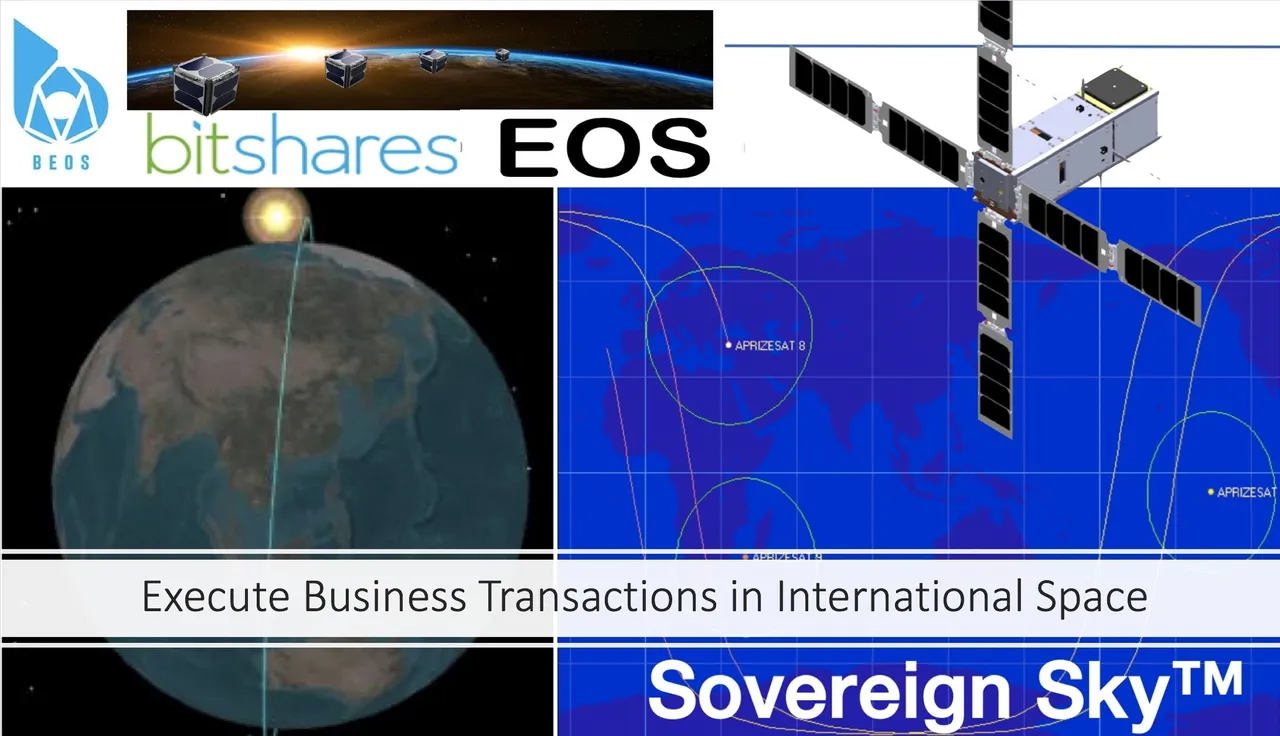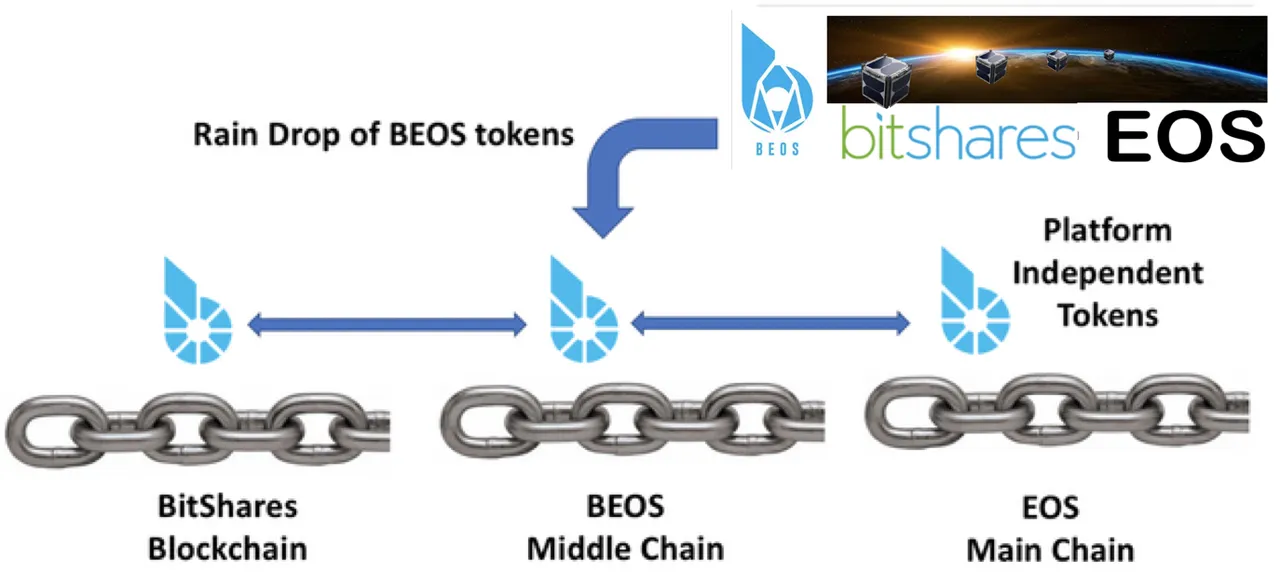
Here are just the key facts about how to get in on the real BEOS raindrop coming up next month.
Terradacs, Ltd., a Maltese company, will be closely following the fictional concepts laid out by Doc Brown in the Sovereign Sky sci-fi series "Brown Paper" Doc's Fictional Guide to the Brown EOS (BEOS) when it releases its real implementation of BEOS over the holidays.

BEOS is a new privately funded blockchain, a straight clone of EOS intended to serve as a middle chain between BitShares and the EOS main chain. Its goals are token portability and jurisdictional agility. It does these functions without requiring any modifications to or cooperation from either BitShares or EOS communities, neither of which are involved in its development. BEOS tokens serves the same functions as the EOS token on the EOS main chain - giving holders voting and access privileges to network resources.
Token portability means that all BTS and EOS tokens can move between these systems transparently, increasing the utility of the BitShares smart coin factory and access to EOS smart contract technology. Jurisdictional agility including Sovereign Sky's nodes in space are the key innovation and reason why BEOS will be favored by industrial users, sitting as it does at the crossroads between the BitShares smart token factory and the EOS universe.
Gateways Managed by Block Producers
As the bridge between BitShares and EOS, BEOS will enable any token running on the BitShares network to be easily moved to the BEOS blockchain and eventually to other EOS side chains. This will be accomplished in one of two ways, depending on how the BitShares community chooses to proceed. If the BitShares community votes to enable inter-blockchain capabilities, this will take place entirely on-chain, which would be ideal. Otherwise, this will be accomplished through gateways initially operated by the developers, but ultimately operated by the block producers.
BEOS elected block producers will eventually have the duty of managing multi-signature escrow accounts on the BitShares network that enable sequestering any token on the BitShares chain that is to be moved to the BEOS chain. “Proxy” tokens representing the BitShares tokens will be issued to the owner on the BEOS chain. This will be similar to existing gateways on the BitShares network, but accomplished in a far more democratic and secure manner.
This is not an ICO!!!!!
Terradacs has already paid for development of BEOS and is not selling anything to raise money. Instead, they are giving the access tokens away for free, as a public service, to a Targeted Demographic of people who have demonstrated strong loyalty to BitShares in the past. This includes people who still hold BTS and are actively interested in using the BEOS chain. It also includes people who Dan Larimer once awarded "Brownie Points" (Brownie.PTS) in an expression of appreciation for contributions above and beyond the norm in support of BitShares development. Finally, they will be worth something!
The goal is to seed these positive users with all the tokens and cultivate a strong set of active supporters to do the voting. Those who are unwilling to try out the system with some of their BTS, or who are no longer paying attention to BitShares events, or who are perennial skeptics and nay-sayers will forfeit their offered free tokens to those more worthy of them - Terradacs is, in this way, using natural selection for strong HODLing supporters who are unlikely to dump their tokens.
There will be a fixed supply of 2.5 billion tokens distributed over time, a;; of them in the first 89 days of the launch. Another 1 billion will be given as the Reserve Endowment Fund to the Blockchain Community Defense Trust to manage for the benefit of the ecosystem over time.

Here's how to get yours.
BEOS makes all BitShares tokens portable and platform independent. Thus, it is possible to move your BTS (or any other token, such as Brownie.PTS) onto the BEOS chain and back again with a few simple commands. Terradacs wants to encourage people to try this and will reward those who do (early adopters) with all of the tokens (2.5 billion) during the first 89 days. All you need to do is to move some or all of your BTS (or brownie.pts) onto BEOS during the first 89 days. The more you move, the more raindrops you will catch.
This means there will be 28,089,887.64 BEOS tokens given away every day in a raindrop to be split among those who have moved their BTS onto the network proportional to that day's total staked by all users computed on an hourly basis. For example, someone who happens to own 1% of the total staked tokens would then earn 1% of the daily distribution, or 280,899 BEOS per day that you keep such a balance.
You can move your BTS back to the BitShares network at any time. They remain your assets under your control at all times.
Token Distribution "Raindrop"
In order to obtain BEOS tokens, BitShares or brownie.PTS tokens must be transferred from the BitShares chain to the BEOS chain using the cross-chain transfer gateway described above. While their tokens reside in an account there, that account will receive a steady "rainfall" of BEOS for the duration of the raindrop. BEOS rainfall will last for at least 89 days during which BEOS tokens will be continuously distributed at a preprogrammed rate. There will be a total of 2.5 billion BEOS tokens distributed, with at least half of them falling in the first 89 days. The remainder of undistributed BEOS tokens will continue to rain down at a gradually slowing rate for perhaps another forty fortnights (80 weeks) or more at the discretion of the elected block signers.
The Targeted Demographic will be able to begin participating at any point during the rainfall period. However, the longer tokens are staked, the more BEOS tokens can be accumulated. During the first 89 days of rainfall, all accumulated BEOS tokens will remain locked from spending or trading. This will ensure that no BEOS tokens are traded until all tokens for that period are distributed. The benefit of this method is to ensure that no tax liability is created (in relevant jurisdictions) for new BEOS token holders because the tokens will have no market value until they are unstaked and then tradable. After the 89 day locking period ends, the BEOS tokens may freely trade and thus take on a free market value that may become taxable as income in some jurisdictions.
Participating tokens from the Targeted Demographic transferred to the gateway accounts will be held until a user withdraws them, presumably at the end of the extended rainfall period. Therefore, it will not “cost” anything to obtain BEOS beyond the effort to move them between the two chains and the delegation of proxy voting power to the gateway operator. The gateway operator is entrusted to vote for BitShares policies and worker proposals favorable to deeper BEOS integration. Participation may be for any amount of time with distributions taking place at maintenance interval rates.
Note, that the Targeted Demographic for BEOS token distribution does not include EOS holders according to EOS conventions in the same way that the distribution of EOS tokens or STM tokens does not include BTS holders. This is to keep these communities isolated from any regulatory entanglements they may individually encounter associated with token distribution. Instead, the precedence has been established by Steemit and EOS developers that all members of the graphene family will honor each other by freely using and sharing each other's publicly licensed open source code.
RAM Distribution
RAM and how it's distributed has been a major point of contention on the EOS main net. RAM speculation has led to hoarding, which has driven the costs of deploying software far higher than it should be. RAM should be allowed to trade on the open market, but the Bancor algorithm is not the open market. It can be easily gamed and has been to the detriment of developers and token holders. Decoupling EOS token ownership from ownership of RAM has had negative consequences for the entire EOS network and arguably, the price of EOS tokens. It has created a massive disparity between the cost of RAM and all other network resources.
Telos is proposing an alternative RAM distribution scheme where the Telos Foundation will attempt to control RAM prices through controlling supply. Both the EOS and Telos models have merit, but neither is ideal. They have effectively removed the most valuable part of the network from token owners forcing them to spend their tokens simply to utilize the network. Network resources should be allocated to the token owners in proportion to their token ownership.
The BEOS network will distribute RAM to the Targeted Demographic in the same way BEOS tokens will be distributed except that the rainfall period will occur over a longer period of time. It will start when the BEOS rainfall begins and last for at least 40 fortnights (80 weeks). This will serve as a strong incentive for BTS holders to keep their tokens locked up, thus removing them from the general supply. This could have the added benefit of increasing the value of BTS tokens.
Summary of Distribution
- 2.5 billion BEOS tokens will be distributed to members of the Targeted Demographic that store their tokens on the BEOS platform over an 89 day or longer period.
- RAM will be distributed in a similar manner over a period of 80 weeks or longer.
- 1 billion BEOS tokens will be raindropped to the BCDT Trust.